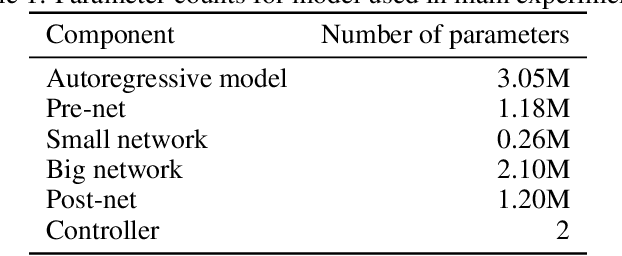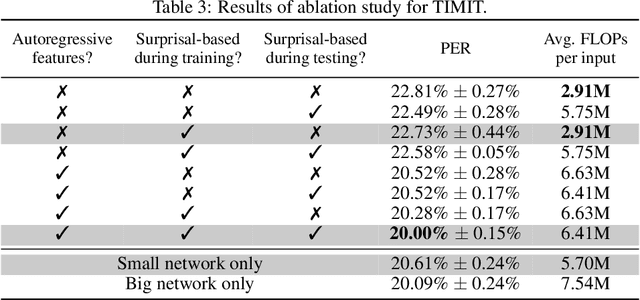Surprisal-Triggered Conditional Computation with Neural Networks
Paper and Code
Jun 02, 2020



Autoregressive neural network models have been used successfully for sequence generation, feature extraction, and hypothesis scoring. This paper presents yet another use for these models: allocating more computation to more difficult inputs. In our model, an autoregressive model is used both to extract features and to predict observations in a stream of input observations. The surprisal of the input, measured as the negative log-likelihood of the current observation according to the autoregressive model, is used as a measure of input difficulty. This in turn determines whether a small, fast network, or a big, slow network, is used. Experiments on two speech recognition tasks show that our model can match the performance of a baseline in which the big network is always used with 15% fewer FLOPs.
 Add to Chrome
Add to Chrome Add to Firefox
Add to Firefox Add to Edge
Add to Edge